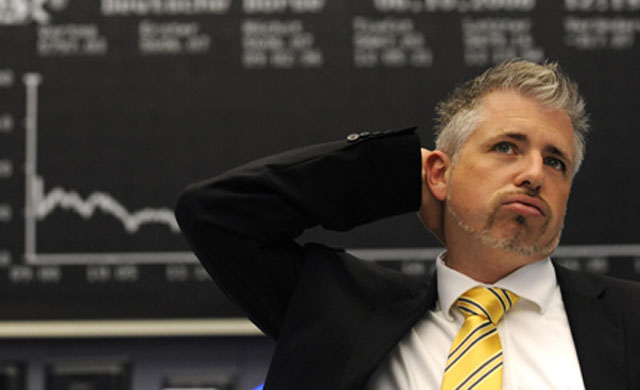Stock markets in the US are making new all-time highs but in Europe it’s a different story. The Dax is way below its all-time high following a surge in EUR/USD and in the UK the FTSE 100 trend has turned down. The FTSE 100 peaked at 7599 on 2nd June. The UK index has underperformed the S&P 500 since June mainly because of the strength of the pound. This has created a bearish divergence. Most companies in the FTSE 100 index generate a large proportion of sales in dollar, when GBP/USD goes up these companies earn less hence a rising GBP/USD creates headwinds for the FTSE 100.

The FTSE 100 index is also a key indicator of future stock market performance. Very often the FTSE 100 will lead the S&P, i.e. it will turn bearish while the S&P is bullish then the S&P will turn down to catch up with the FTSE 100. At 7599 we have completed an Elliott wave pattern on the FTSE 100 which means there is a high probability the FTSE 100 is already in a bear market. This Elliott wave pattern is an ending diagonal labelled [(1),(2),(3),(4),(5)]:

An ending diagonal is a five-wave pattern unfolding between two converging trendlines as shown on the chart. Sometimes the fifth wave will end above the upper line, this is called a throw over and we have one on the chart. An ending diagonal is a terminal pattern, terminal because it occurs at the end of the advance. This advance started in 2003 and will end in 2017. At the end of the fifth wave [wave (5)] the trend will turn down and the decline should retrace all the way back to the start of the pattern near 3500. So we are looking at a potential 53% decline in the FTSE 100 within the next five years based on this pattern.
What could cause such a crash? First of all, the crash was due long ago, the reason it has not happened is because it’s been delayed by the elites, namely the central banks, the IMF, the politicians and the bankers. The elites have engineered a bull market with cheap money.
The elites want the stock market to go up, too many individuals and companies are invested in the stock market, this explains why central banks have a duty to support the market when conditions are not right or when markets are under stress. For many years and since the last financial crisis, stock markets have been boosted by central banks. Providing liquidity to the banks in the aftermath of the stock market crash was meant to encourage lending and kick start an economic recovery. Now central banks are talking about removing liquidity.
The main concern right now is removing liquidity from the market. The Fed, ECB and Bank of England have reached their objectives with regard to quantitative easing. The global economy appears to be in good shape. Back in 2008 when the banks were under stress, central banks began large scale purchases of asset backed securities in order to provide liquidity to the financial system and the economy. The idea was to stimulate bank lending. This process stabilised the economy and the financial system and now central banks must start to reduce their balance sheets by selling asset backed securities. Reducing the balance sheet will push bond yields higher and when bond yield rise equities suffer as bonds become more attractive relative to stocks. This is the next phase and it will be a slow process as central banks do not wish to disrupt financial markets.
The thing is this deleveraging process will occur at the end of an Elliott wave, more precisely at the end of the bull market based on the Elliott wave pattern. The FTSE has already peaked at 7599, the S&P is about to peak. You can understand why we are now at the start of a long period in which stock markets will go sideways (best case scenario) or down (worst case scenario) for many years.
Elliott wave is not an exact science, sometimes there are two ways to interpret the pattern. As a result I can’t be precise about the exact timing of the top in the S&P. It could happen in the next few days or in August or September. But one thing is sure, going forward upside is limited. As noted the FTSE is unlikely to make a new all-time high above 7599. The decline is underway, each bounce will provide opportunities to go short.
Right now stock markets are being supported by earnings reports, that is the only catalyst pushing markets higher at the moment. When companies report their earnings, stock markets tend to rise. When the earnings season ends I can’t see anything else that will push markets higher. The end of the earnings season will also coincide with the end of a five-wave rally in the S&P. So it looks like the S&P will face severe headwinds in the next few weeks/months and it will eventually catch up with the FTSE.
Thierry Laduguie is Trading Strategist at www.e-yield.com


 Hot Features
Hot Features














Thank you for the information specially the chart that gives the clear idea.You can get the ideas from Instant Forex Support Forum.